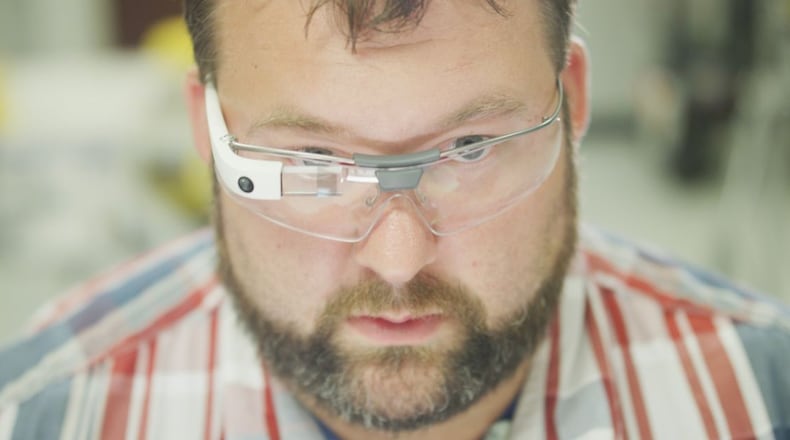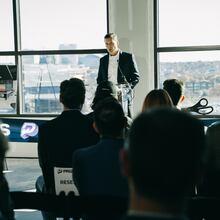At the AGCO tractor factory in Jackson, Minn., assembly workers don’t have to carry around work manuals to guide them through their tasks.
They also don’t have to rely on memory.
Inside their safety glasses, factory employees have access to wearable computers, which are voice-activated and can pull up parts lists, assembly directions and other instructions “hands-free.”
Duluth-based AGCO is one of the early adopters of "assisted reality" glasses in the workplace. What used to be known as Google Glass has become a workplace tool that some companies are using to improve productivity.
Now known as Glass, the computers are made under the auspices of Google parent company Alphabet's X lab, and cost AGCO $1,250 each, or $1,500 for prescription lenses.
Peggy Gulick, AGCO’s director of business process improvement, says that’s better than the $3,000 “rugged” tablets that had to be carried by workers climbing on and off tractors and, periodically, were accidentally dropped and damaged.
The glasses help make employees “safer, more productive,”said Gulick, who has been championing the use of the technology.
Coca-Cola, Volkswagen, GE, McKinsey & Co. and Boeing are among the companies that also have tested or used Glass. Others have tried Microsoft's "mixed reality" HoloLens. A Forrester Research study predicted that more than 14 million U.S. workers will use smart glasses by 2025.
At AGCO, instructions embedded in the safety glasses can be customized to the employee’s level of experience and amount of instruction needed, Gulick said. Workers can scan a machine’s serial number to pull up a manual, photo or video to build a tractor. They can also use voice commands to leave notes for the next shift.
Five years ago, workers had to get off a tractor, walk over to a computer and pull up manuals, sometimes writing instructions on a Post-it note, Gulick said. Then came the tablets.
After Google Glass debuted for consumer use, Google offered AGCO a pair to try. The "Explorer" consumer edition of the technology was discontinued in 2015, and Google started targeting companies instead of consumers for the glasses.
Now, AGCO has about 150 pairs in use at its 860-employee Jackson facility where Massey Ferguson and Challenger tractors are made. The company is also testing use of the smart glasses in facilities in Illinois, Kansas, Germany, Italy and Brazil.
The result: A 30 percent reduction in inspection time, 25 percent reduction in production time for certain assembly jobs and a 50 percent reduction in time needed to train new employees, according to Gulick.
She estimates the company will be using about 1,000 pairs by the end of this year.
“It’s just a tool,” she said. “It’s not a cool toy. … It has to have value.”
But there have been challenges.
The company was concerned that some employees might be reluctant to embrace the technology, according to Gulick. And it had to work to prevent ergonomic issues such as headaches and eye strain.
The workers who are assigned the assisted reality glasses are required to wear them, and the devices can record how long jobs take to complete. The Jackson plant is non-union, though some other AGCO employees elsewhere are unionized, which could give employees more say on work rules.
“Some employees may be skeptical” of augmented reality, “or fearful that use of it could lead to their jobs being eliminated,” according to a Society for Human Resource Management article. Other challenges for companies could include the cost and comfort of use.
At AGCO, workers can’t take the glasses outside of the facility, and can’t surf the Web on them — the glasses only run software called Proceedix with assembly instructions and other work information.
“We just want to be able to report standard work — how long it takes to do an operation,” Gulick said. The improvements in productivity are so significant that “it’s really the most disruptive thing I’ve ever seen in the industry.”
About the Author






